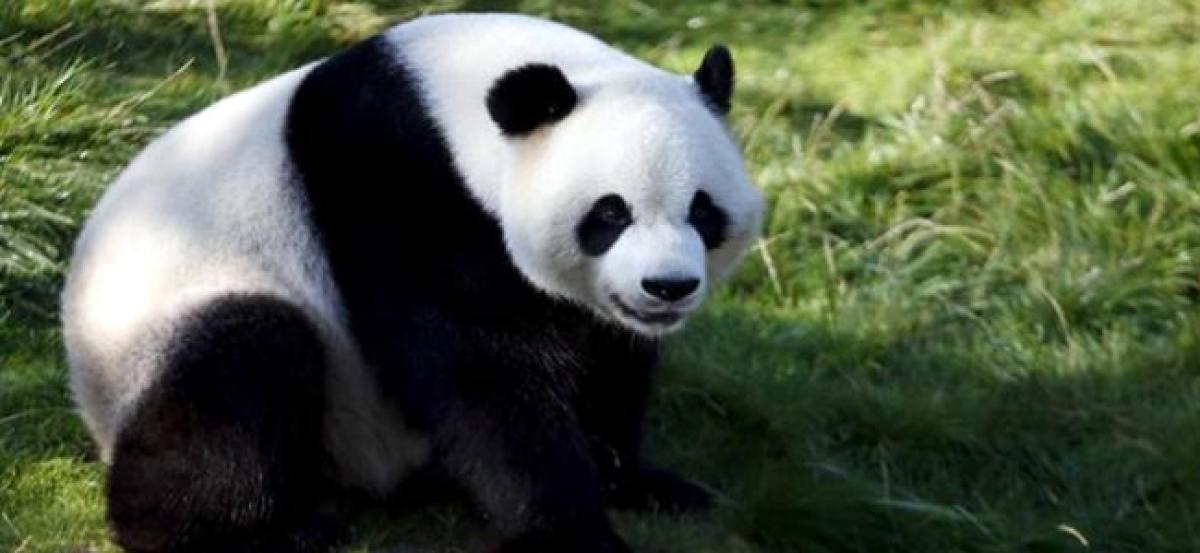Live
- A Guide to Temperature and Humidity Standards in Data Center Server Rooms
- Gadwal collector briefs on details of voters
- Jupally Krishna Rao takes part in Alampur rallu
- Bharath Prasad files 3rd Nomination
- Baisakh Month: A Time of Auspicious Beginnings and Sacred Festivals
- Oust BJD govt for overall development, says Shah
- Unveiling the Hidden Gems: Surprising Health Benefits of Garlic Peels
- Overcoming Sleep Struggles: A Comprehensive Guide to a Restful Night
- RTC bus hit the auto
- MLA Kuchukula Rajesh Reddy participated in the Birappa festival
Just In
Cizhutuo Panda: 22,000 year old lineage of Panda species


The world\'s oldest DNA evidence from pandas which belonged to a 22,000-year-old fossil found in China, was isolated by scientists and they have discovered a new lineage of the species.
BEIJING: The world's oldest DNA evidence from pandas which belonged to a 22,000-year-old fossil found in China, was isolated by scientists and they have discovered a new lineage of the species.
The report, that was published in the journal Current Biology, shows that the ancient panda found in Cizhutuo Cave in the Guangxi Province of China separated from present-day pandas 144,000 to 227,000 years ago, referring that it belonged to a very distinct group which does not exist today.
"Using a single complete mitochondrial DNA sequence, we find a distinct mitochondrial lineage, suggesting that the Cizhutuo panda, while genetically more closely related to present-day pandas than other bears, has a deep, separate history from the common ancestor of present-day pandas, This really highlights that we need to sequence more DNA from ancient pandas to really capture how their genetic diversity has changed through time and how that relates to their current, much more restricted and fragmented habitat," said Qiaomei Fu from the Chinese Academy of Sciences.
Very little has been known about the pandas' past, especially in regions outside of their current range in Shaanxi province or Gansu and Sichuan provinces. Evidence suggests that pandas in the past were much more widespread, but it has been unclear how those pandas were related to pandas of today. In the new study, researchers used sophisticated methods to fish mitochondrial DNA from the ancient cave specimen. That is a particular challenge because the specimen comes from a subtropical environment, which makes preservation and recovery of DNA difficult.
The researchers successfully attained nearly 150,000 DNA fragments and aligned them to the giant panda mitochondrial genome reference sequence to recover the Cizhutuo panda's complete mitochondrial genome. They then used the new genome along with mitochondrial genomes from 138 present-day bears and 32 ancient bears to construct a family tree.
Their analysis showed that the split between the Cizhutuo panda and the ancestor of present-day pandas goes back about 183,000 years. The Cizhutuo panda also capable of possessing 18 mutations that would alter the structure of proteins across six mitochondrial genes.
The researchers said that the varying amino acid changes may be related to the ancient panda's distinct habitat in Guangxi or perhaps climate differences during the Last Glacial Maximum.
The findings suggest that the ancient panda's maternal link had a long and unique history that differs from the maternal links which lead to present-day panda populations.
The researchers said that succeeding in capturing the mitochondrial genome also suggests that they might successfully isolate and analyse DNA from the ancient specimen's complex nuclear genome.
"Comparing the Cizhutuo panda's nuclear DNA to present-day genome-wide data would allow a more thorough analysis of the evolutionary history of the Cizhutuo specimen, as well as its shared history with present-day pandas," Fu said.

© 2024 Hyderabad Media House Limited/The Hans India. All rights reserved. Powered by hocalwire.com






